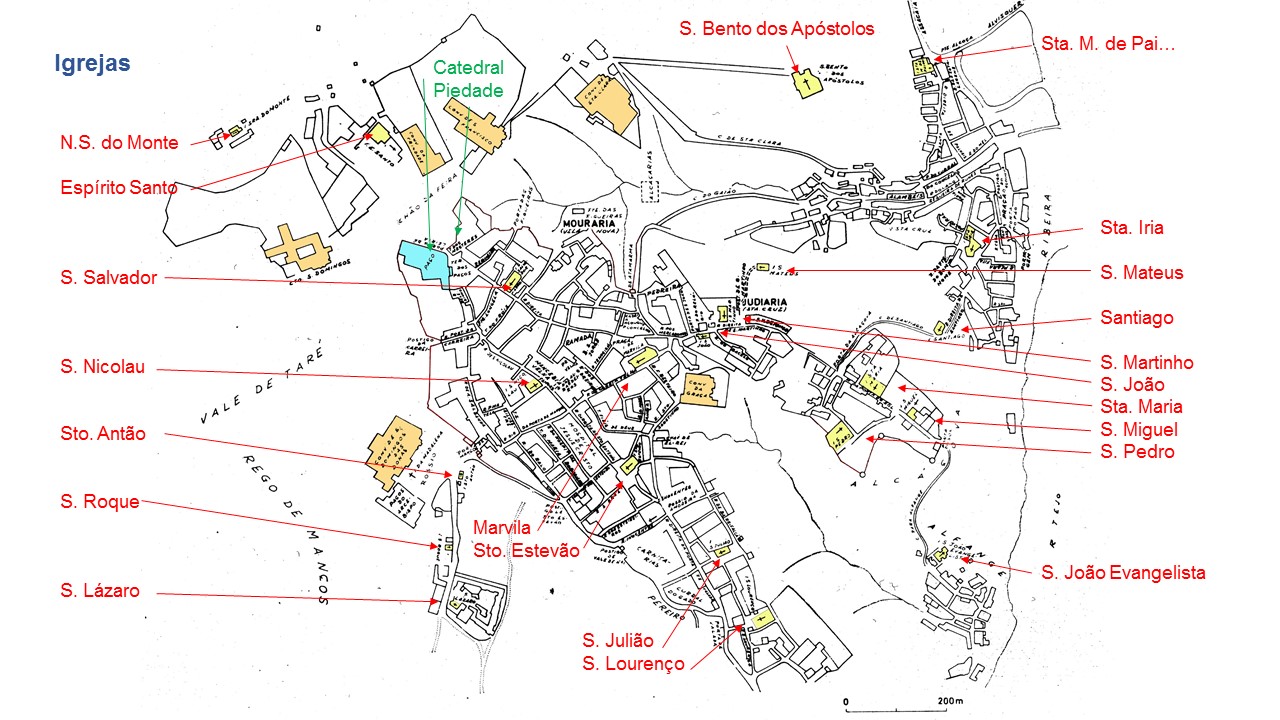
The Churches
Santarém had many churches, and kept renewing and remodeling them through time. The earliest known was built during the Islamic period, in the 10th or 11th century, for the residing Christian community. Some of the existing churches may have been built over or near Roman or Visigothic temples, but it is difficult to establish which and when.
After the conquest, the city was renamed Sancta Herene and its upper part was divided into eight parishes: Santa Maria da Alcáçova, Santa Maria de Marvila, São Martinho, São Julião, São Salvador, São Nicolau, Santo Estêvão, and São Lourenço.
The lower portion of the city, by the river, was divided into seven parishes. In the Seserigo area (north): Santiago, Santa Iria, São Mateus, and Santa Cruz. In Alfange (south): São Pedro, São João Evangelista, and São Bartolomeu.
In the 14th century the Jewish quarters were established within the S. Martinho parish.
Below we present an inventory of some the churches and chapels for which we have data, excluding the churches from monasteries and convents, which are presented in another section. The churches presented below are tentatively organized chronologically.
Temples before the Christian conquest
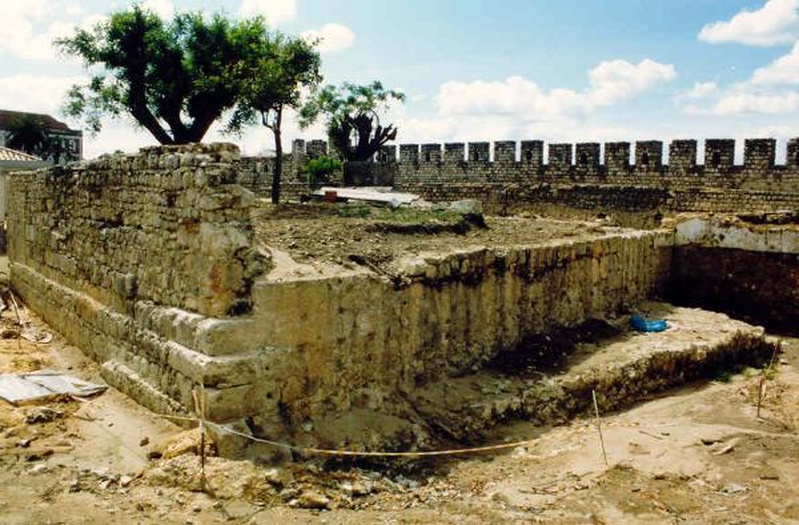
After the conquest the city was named back to Sancta Herene and the upper part of the city was divided into three parishes (paróquias): Santa Maria da Alcáçova, Santa Maria de Marvila, São Martinho, and later, eight, adding São Julião, São Salvador, São Nicolau, Santo Estêvão, and São Lourenço.
The lower part was divided in two areas, up (Seserigo) and downstream (Alfanje), and seven parishes: Santiago, Santa Iria, São Mateus and Santa Cruz in Seserigo, and São Pedro, São João Evangelista, and São Bartolomeu in Alfanje.
During the reign of king D. Pedro I (1357-1367) the Jewish quarter (judearía) was established in S. Martinho. the situation of the Synagogue is not known.
In the mid-18th century the parishes of the upper part of the city and Seserigo were the same, but São Pedro and São Bartolomeu were collapsed into São João Evangelista. At that time there were 2,122 inhabitants in Santarém (inside the walls), Ribeira and Alfanje.
A reform in the 19th century collapsed the 13 parishes in existence were collapsed into four: Divino Salvador, encompassing the churches of Piedade, Sta. Clara, and Seminário; Marvila with the churches of Marvila, Graça, Milagre, Jesus Cristo (Hospital), Alcáçova, and S. João Evangelista (Alfange); Ribeira, with the churches of Santa Iria and Santa Cruz; and São Nicolau, with its church.
With foundations on the 12th and 13th centuries
Although an impressive number of churches was built soon after the city’s conquest by king Afonso Henriques, in March 1147, almost all the old churches were improved and reconstructed and look much different today.
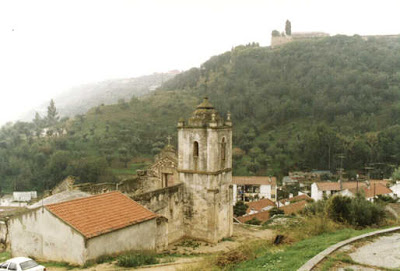
Igreja de São João Evangelista – This church dates to the late 12th century and has suffered considerable changes through time. It was probably built on the site of an older, 9th or 10th century Christian church built during the Islamic occupation by the Christian community, probably on the place of a Visigothic temple. In 1147 king Afonso I gave this church to the Knights Templar for their help in the conquest of the city.
From the Islamic period, only the main chapel persists (and part of the altar, preserved in the municipal museum. It was heavily damaged by the 1535 earthquake.
The parish of S. João Evangelista was integrated in the parish of Santa Iria in 1851 and later in the Marvila parish.
Ermida de Nossa Senhora da Victória – Was located about 50 passos to NE from Marvila church, in the Porta da Atamarma area. It was allegedly ordered by king Afonso Henriques (1109-1185), near the door through which the invading troops entered the castle in 1147. It was demolished with the door, in 1865.
Igreja de São Julião – This church was probably built in the late 12th century and partially destroyed in the 1755 earthquake. Its parish was integrated in the Santo Estêvão do Milagre parish and later, in 1851, in the Marvila Parish. It was demolished in the 1890s.
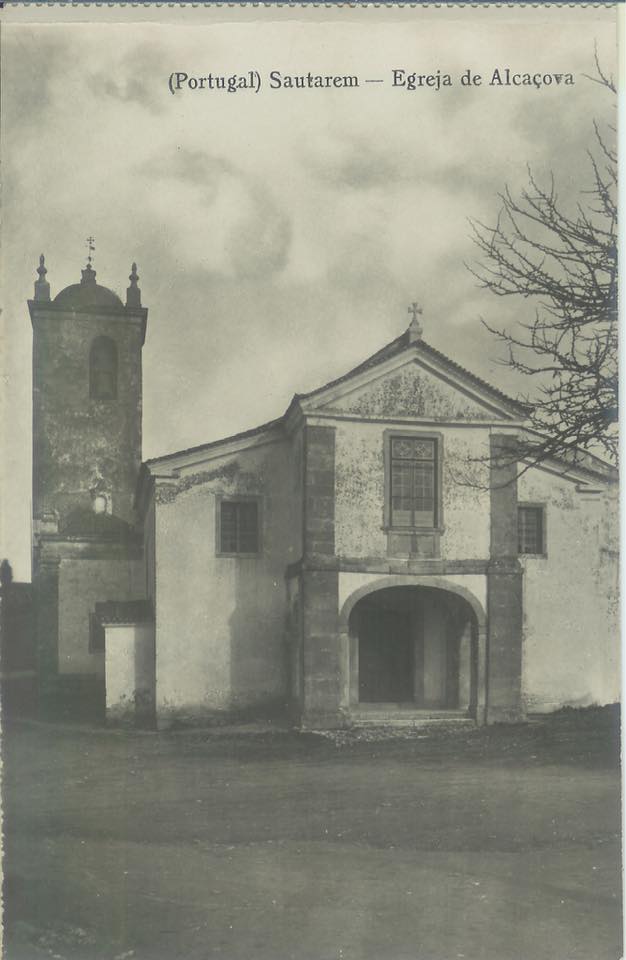
Igreja de Santa Maria da Alcáçova – Its construction started seven years after the city’s conquest, in 1154 under the rule of the knights Templar, charged with the defense of the city. It was likely built over an existing mosque, which may have been built in the place of a Visigothic temple. The remains of a Roman temple were fund and surveyed nearby, a few meters from this building. It was located near the royal palace, which maintained its function under the new Christian rule. the small area of the alcáçova, with about 4 ha, was probably occupied mainly by the city rulers.
The original, Romanesque, church was completely remodeled and drastically altered between the 16th and 18th centuries and it is almost impossible to reconstruct its original architecture. Only a few Gothic inscriptions attest this church old origins.
In the early 18th century, between 1715 and 1724, D. Rodrigo Teles de Meneses, count of Unhão, sponsored the remodeling of this church in a Neoclassic style. New works in the 19th century changed this church further and today it is difficult to imagine the original construction.
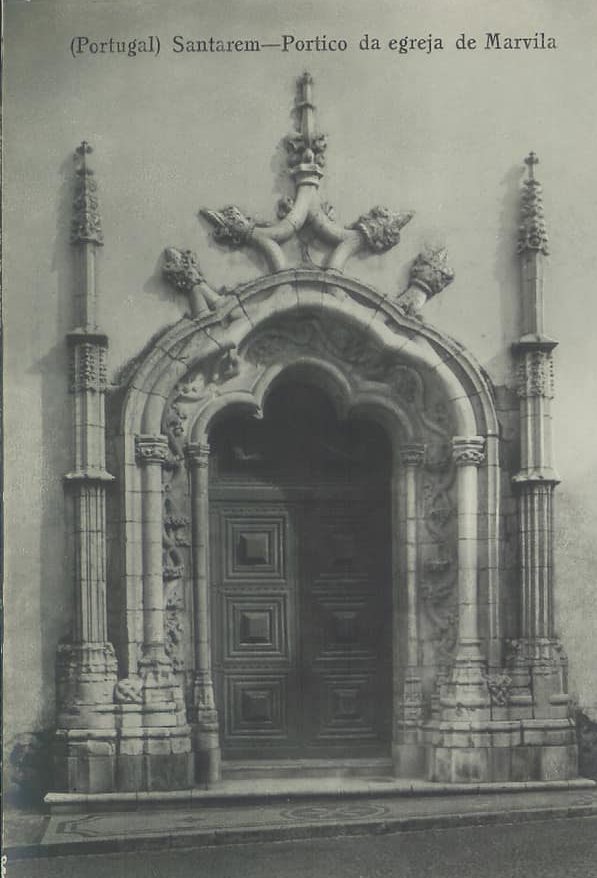
Igreja de Marvila – Possibly built over or near the village mosque soon after the conquest, in the 12th century. It was donated to the Knights Templar in 1159 and completely remodeled in the mid-13th century.
The church was rebuilt in the early 16th century. Between 1617 and 1642 its interior was covered with tiles.
In 1787 the church received conservation works, probably after the damages inflicted by the 1755 earthquake.
In 1876 the demolition of the bell tower was concluded after years of debates and embargoes, to make space for the nearby square. A new, smaller tower was built in its place, integrated in the facade.
In 1903 the church received an organ and two altarpieces that belonged to the Convent of Santa Clara, which was by then in ruins.
In the 20th century the church was repaired twice, but without any changes to its architectural layout.
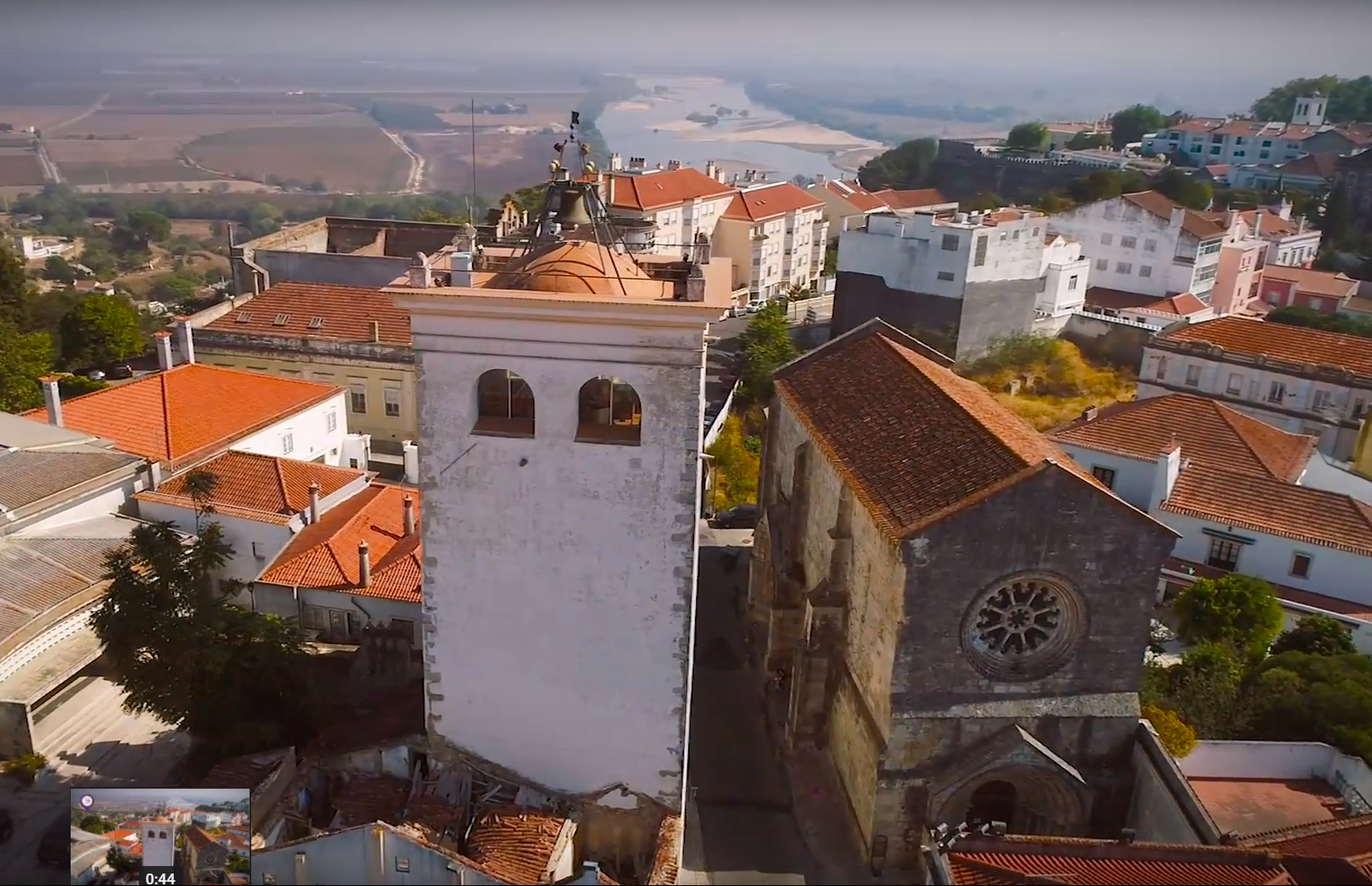
Igreja de São João do Alporão – Built in the 12th century, outside of the alcáçova walls, it formed a defensive structure and had a circular tower that was part of the Alporão door, squeezed between the Alporão tower and the tower that was replaced by the Torre das Cabaças.
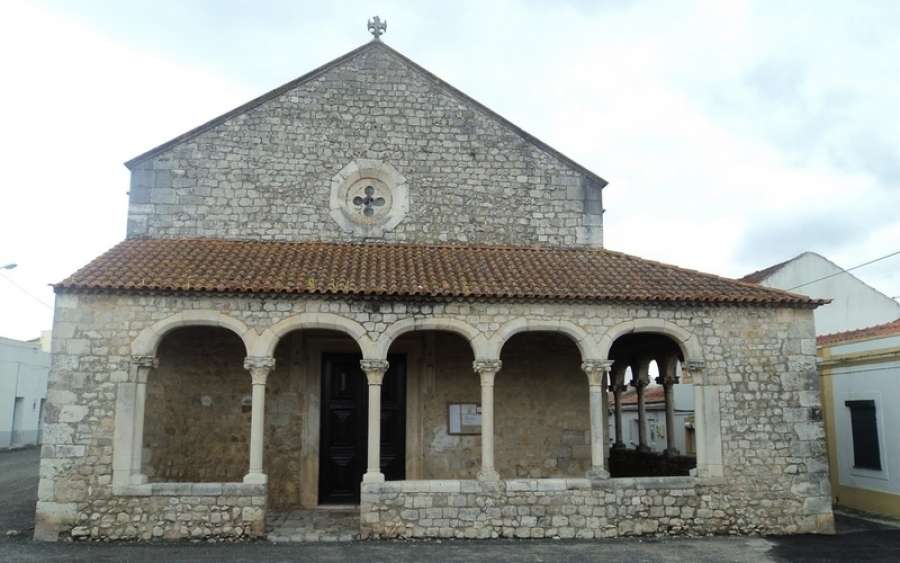
Igreja de Senhora do Monte – Built in the late 12th century it was modified in the 14th, 16th, and 17th centuries. At least since 1191 it belonged to the Colegiada de Santa Maria da Alcáçova. In the 13th century it was passed to the S. Lázaro Hospital, and assigned as a leprosarium.
Igreja de Santiago – This parish church was probably built during the 12th century. The Santiago parish was integrated in the parish of Sta. Iria in 1854.
Igreja de S. Martinho – Built in the late 12th century, in the place where today stands the Rosa Damasceno theater, this church was a parish church. The parish of S. Martinho encompassed the Alporão church, Torre das Cabaças, de Judearia, the church of Sto. Ildefonso, and the convent of Santa Teresa das Carmelitas Descalças.
The parish was extinct in 1851 and integrated in Marvila. The curch was sacked by the Napoleonic troops and converted into a theater. It was demolished in the 19th century and replaced with Teatro Rosa Damasceno.
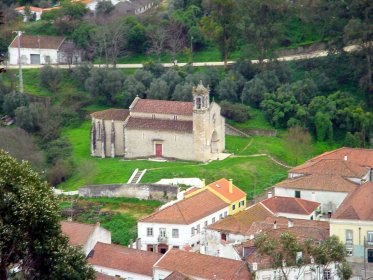
Igreja de Santa Cruz – Built in the mid-13th century, this church was remodeled in the 14th century, again in 1551, and again in 1681 two of its chapels were covered with tiles.
It may have suffered some damage from the earthquakes of 1755 and 1909. In the 20th century this church was heavily remodeled by the then Direcção Geral dos Edifícios e Monumentos Nacionais. At the time this stage agency destroyed most structures and decorations posterior to the 16th century and rebuilt these churches in the Romanesque or Gothic tastes. A brochure detailing the remodeling works was published by that state entity.
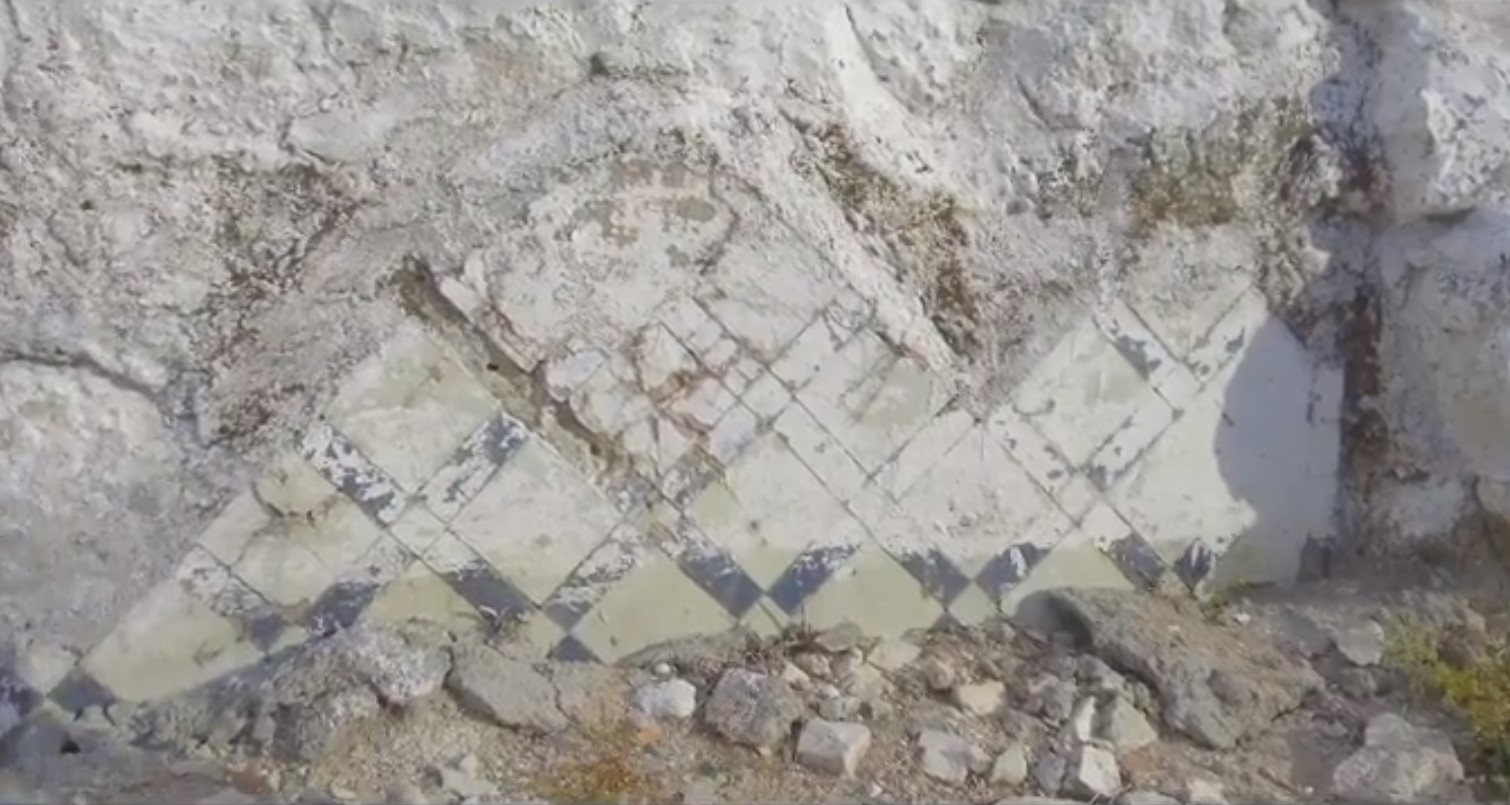
Igreja de Santa Iria (a velha) – Probably built in the 12th century, remodeled in the following centuries. It is possible that there was a Visigothic temple in its place before the conquest of Santarém. It has been demolished and its remains can be still be seen next to the chapel of Nossa Senhora das Neves (see below). Foundations of an old building are still visible on the soil of the vacant lot standing next to this chapel, probably belonging to the old temple and to the old church.
There is some confusion between this old church and the church of Santa Iria (a nova).
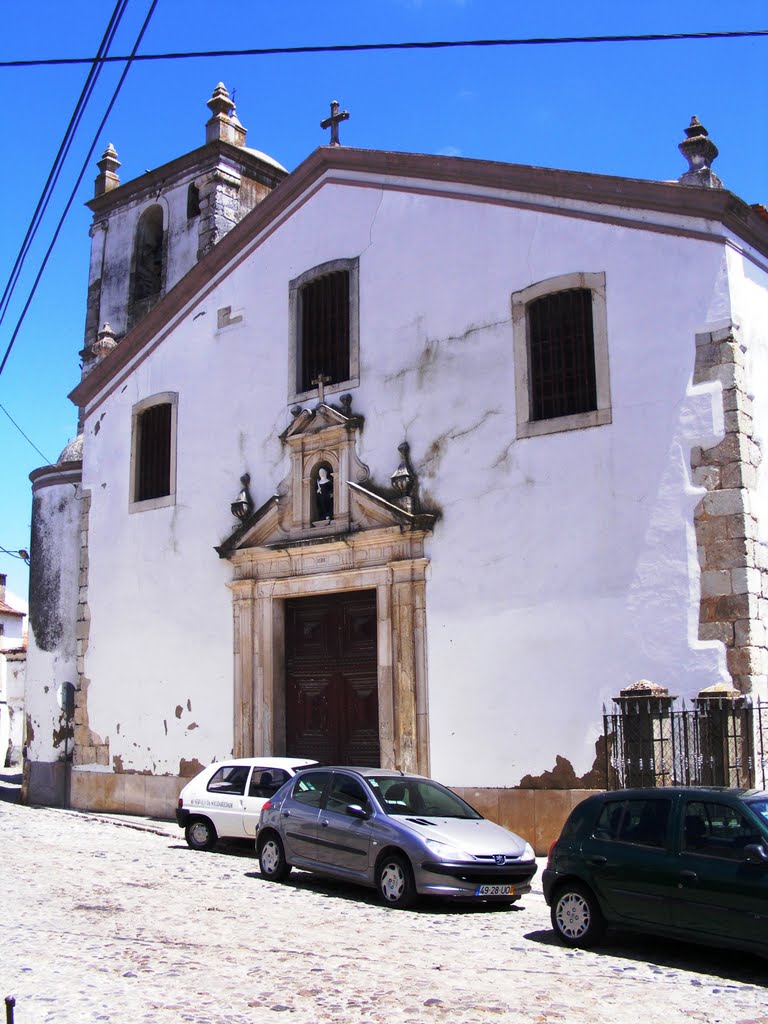
Igreja de Santa Iria (a nova) – Probably built in 1160, a few years after the conquest of the city, it has been rebuilt several times. The door has a date of one of the last remodeling works, in 1688.
A chapel instituted in the 15th century is still preserved in this church.
Most of its interior, however, has been remodeled through time to match the decorative fashions of the almost nine centuries of existing. Today the tiles, paintings, and altars date to the late 17th and the 18th century. The collapse of the old parishes into just one, in the 19th century left some of these churches abandoned to decay.
In 2010 this church was structurally damaged and risking collapse. This building would be a good candidate for a 3D virtual recording with photogrammetric methods.
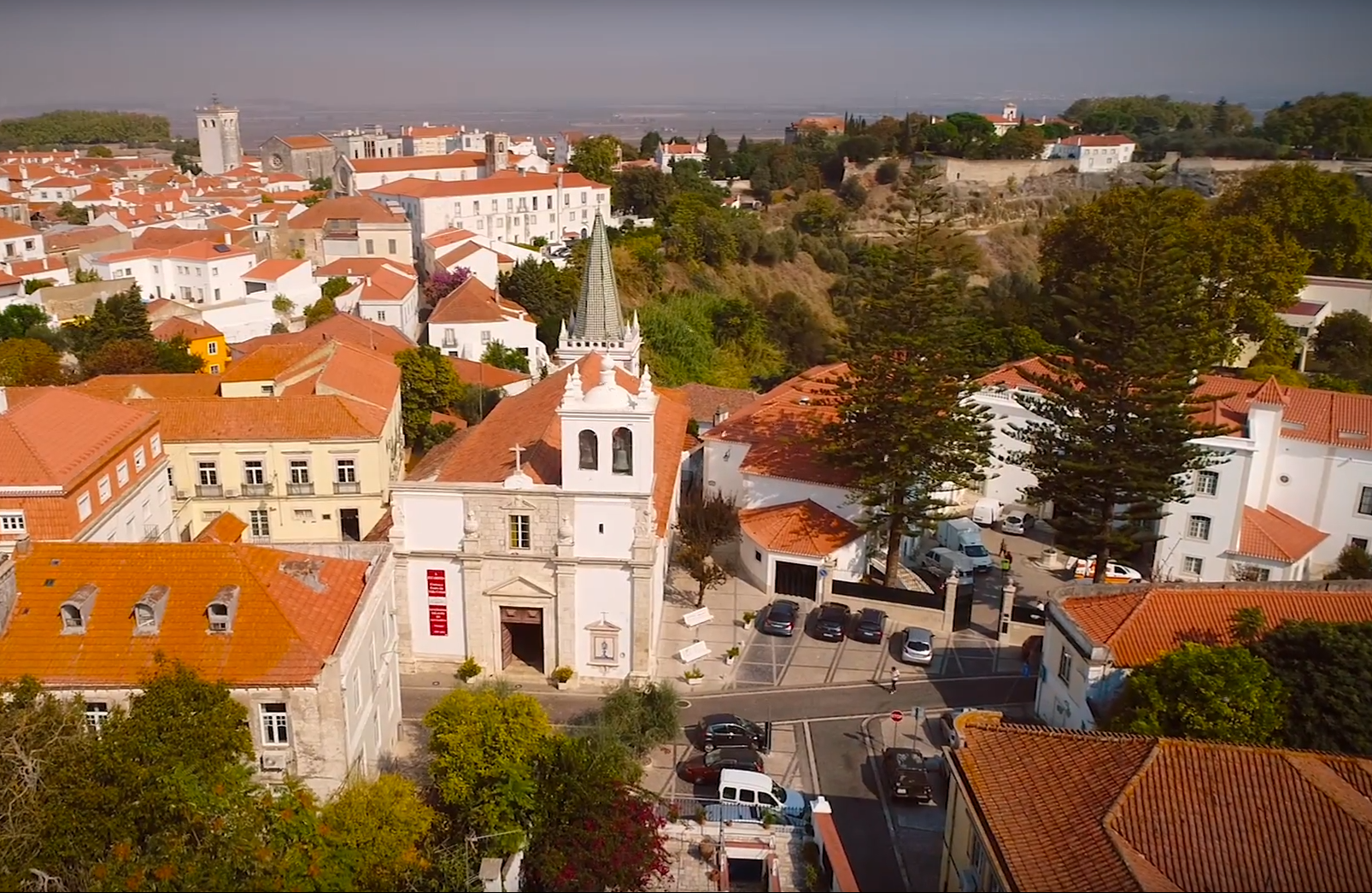
Igreja de Santo Estêvão, or Milagre – This church stands on the site of a 13th or 14th century Gothic church. Remodeled in the 16th century, and again in the 18th century, it commemorates a legend of a miracle which is believed to have happened in Santarém, in the mid-13th century.
Built in the 14th and 15th centuries
As the city grew and the landscape around it became more productive, a number of new churches were built. As mentioned above, the influx of money was often used in remodeling the existing churches as well, and adapting them to the new tastes and architectural fashions.
Igreja de São Salvador – Built in the 14th century and consecrated in 1335, this church was rebuilt in 1692 and demolished in 1909, after the earthquake, which damaged and condemned its ruins. It is now a square named Padre Francisco Nunes da Silva.
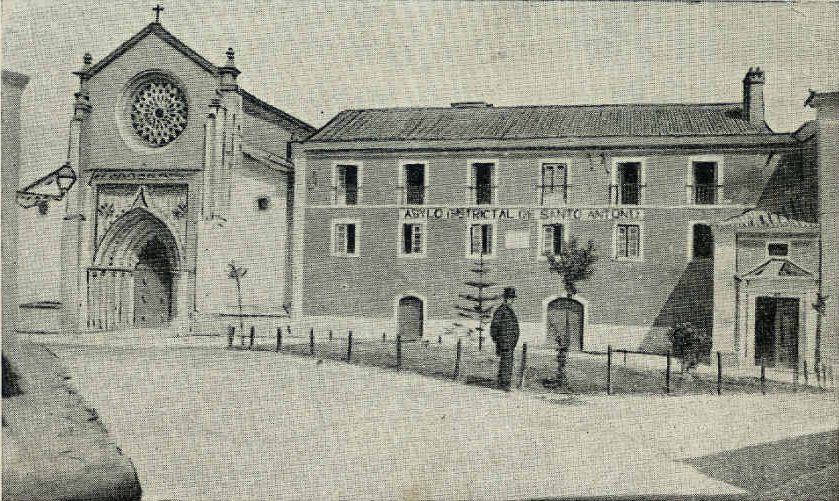
Igreja de Nossa Senhora da Graça – Built between 1380 and 1420, partly funded by the counts of Ourém, D. João Telo de Meneses and his wife Guiomar de Vilalobos, like all churches, this church suffered improvements through time, with the addition of private chapels, altars, and tombs, and several reconstruction works, the most important in the 16th century, after the earthquake, and in the 20th century, when it was heavily remodeled.
Chapel of the Hospital of Jesus Christ – Established by João Afonso de Santarém (d. 1426), who fought at Aljubarrota, in his own palace in Santarém. This hospital was located at Canto da Cruz and was relocated – in 1834? – to the extinct Convento de Nossa Senhora de Jesus dos religiosos da ordem de S. Francisco, located on the square that was called da Magdalena, then das Donas and then do Sítio.
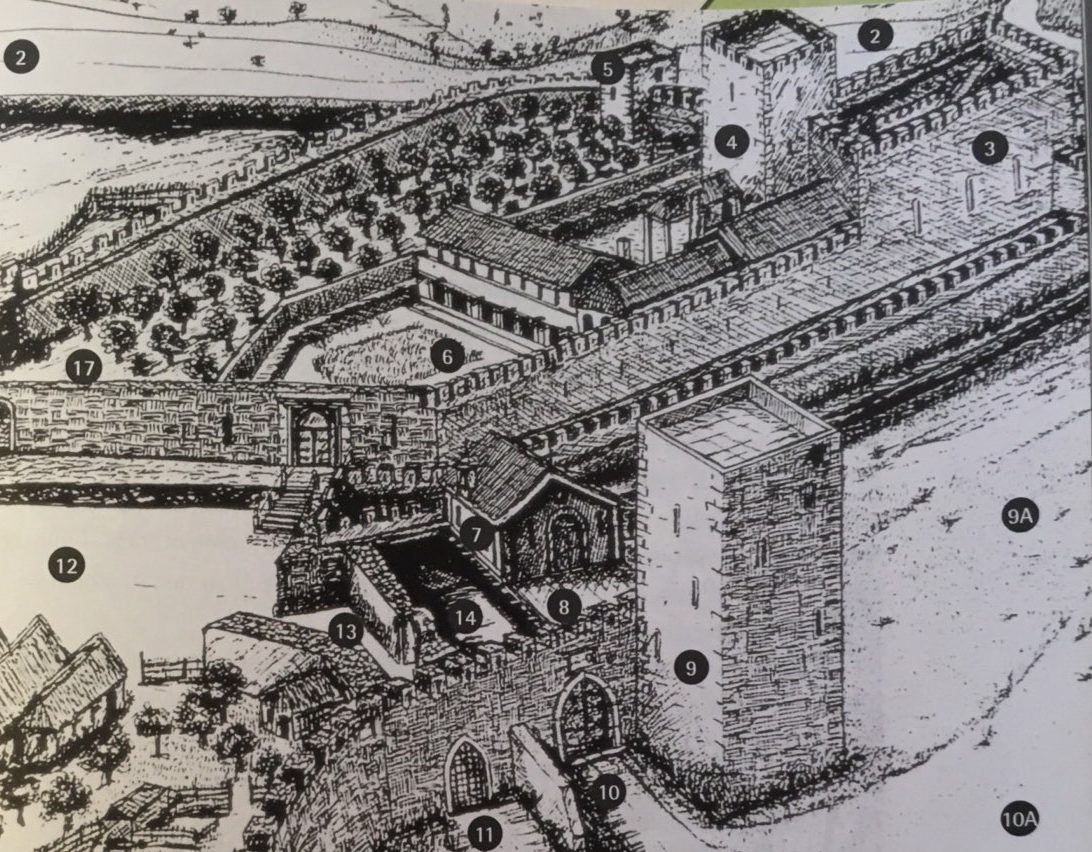
Ermida de Nossa Senhora de Guadalupe – Erected in the reign of king Afonso V (1432-1481) by by a monk named Afonso da Piedade, near the place of the Porta de Leiria (No. 7 in the image). It was demolished sometime before the 17th century.
Igreja de São Roque – This church is described by father Ignacio de Vasconcellos, in 1740, located near the Ermida de S. Lázaro, with three altars, possibly built after a pest outbreak, and housing an image of S. Roque that was much revered already in 1480.
Later constructions, from the 16th to the 18th centuries
In 1491 the young prince Afonso (1475-1491), heir to the Portuguese crown, died in a horse riding accident in Santarém. Both his father, king John II (1455-1495) and mother, queen Leonor (1458-1525), were devastated and never returned to Santarém, where they lived part of the year. This had a negative impact in the city’s economy, and after the 1535 earthquake there was a period of noted recession in the city, which was reflected in the construction and repair of the city’s religious architecture.
Igreja de S. Bento dos Apóstolos – This church was probably associated to the monastery with the same name, located in S. Bento, and founded in 1571 by D. Maria, daughter of king D. Manuel (1469-1521). There was a ruined chapel here at the time: the ermida of Santo Cristo da Pastorinha, or dos Apóstolos, probably dating to the 12th century, and in ruins at the time.
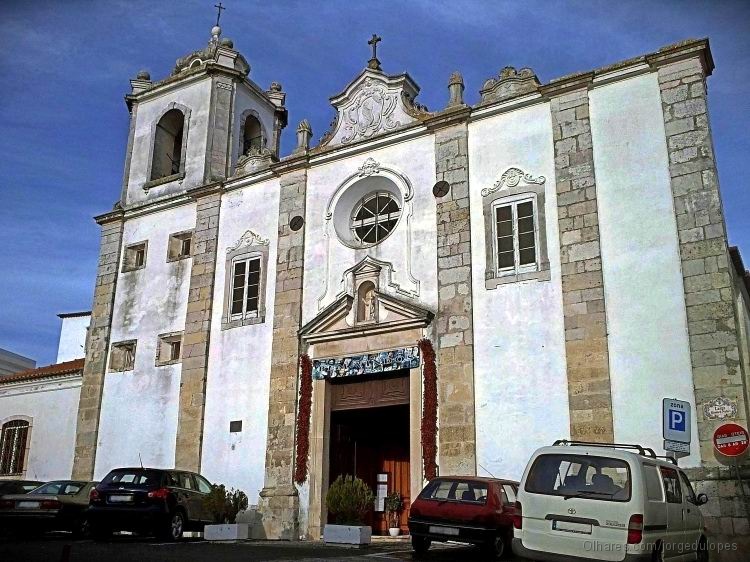
Igreja de São Nicolau – Started in 1613, this church was built over the ruins of a previous, Gothic church, destroyed by fire. It houses the 14th century tomb of Fernão Rodrigues Redondo, a knight in the court of king D. Dinis (1261-1325) that had a house in Santarém
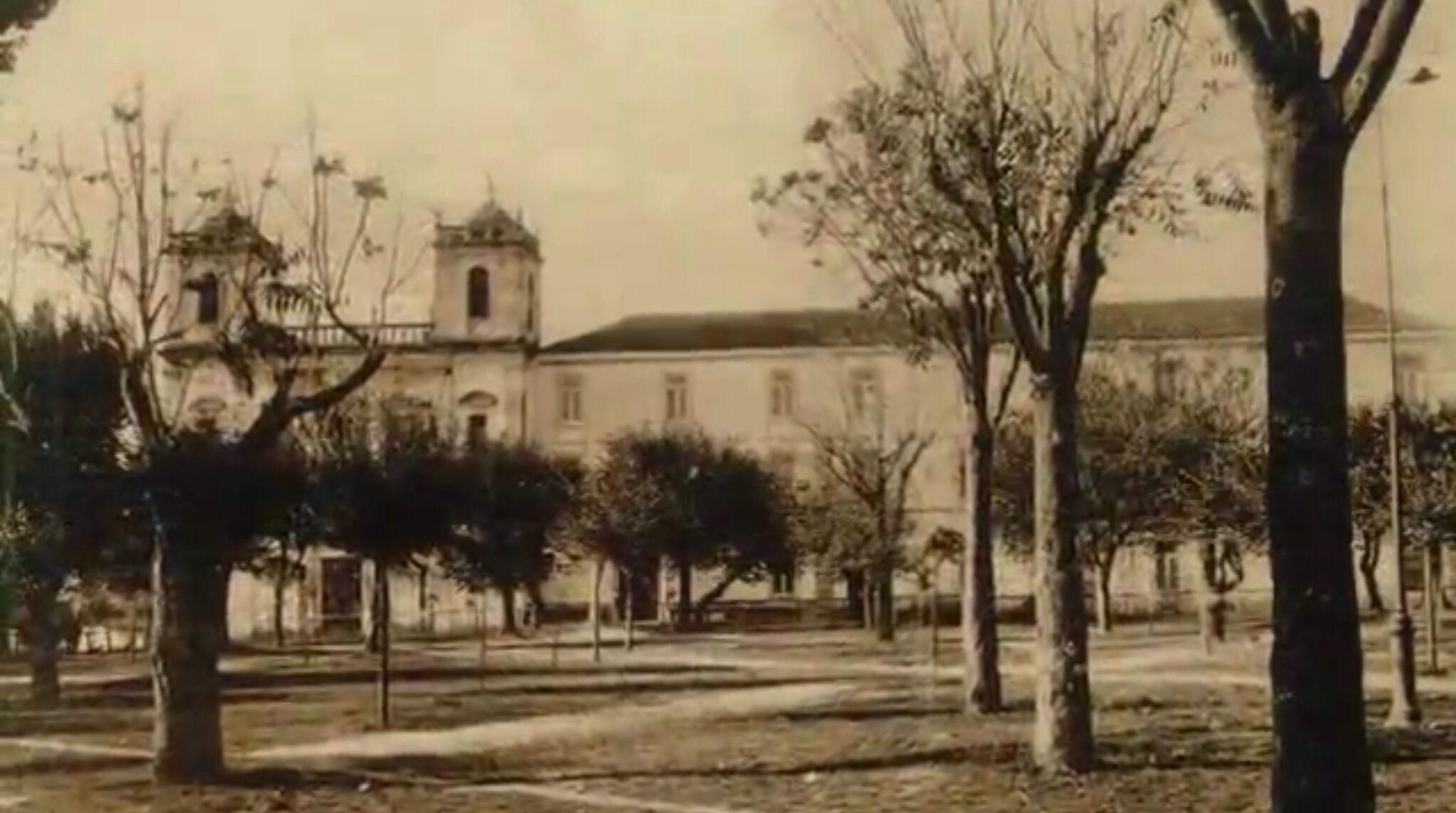
Igreja de Nossa Senhora de Jesus do Sítio – Built in the first half of the 17th century, this church was integrated in the Convent of the Franciscanos da Ordem Terceira, which was transformed in an hospital in the 19th century.
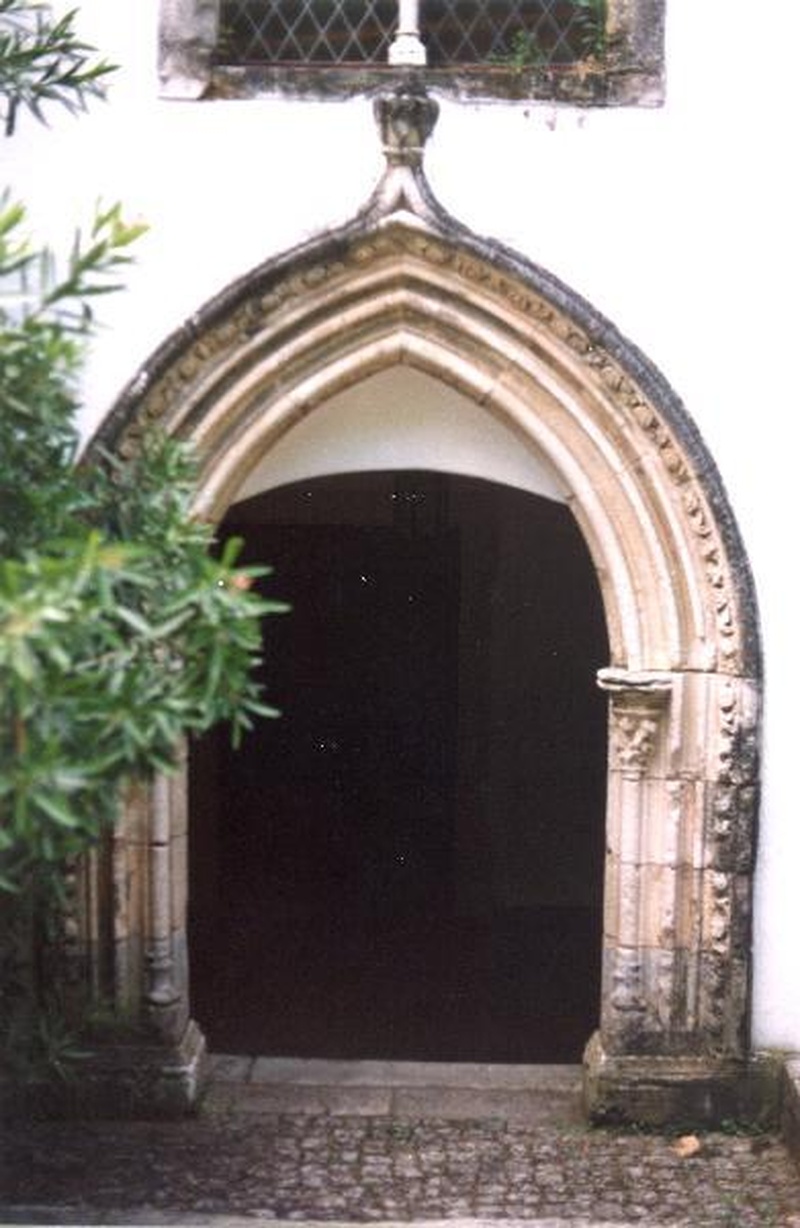
Ermida de São Lázaro – This church is described in a book titled História de Santarém Edificada, que dá notícia da sua fundação e couzas mais notáveis nella succedidas, by a priest named Ignacio da Piedade e Vasconcellos (1740). No date is given for its construction in this book. It was located outside the city walls, near the Hospital dos Lázaros, built in 1680, in the old Carreira.
The door of this chapel was sold upon its demolition and installed at Quinta da Saúde, a private property built over the remains of the old Convento de Santa Catarina do Vale Mourol, or da Ordem Terceira de São Francisco, which was founded in 1470 outside the city walls and sold to private owners in 1834, when all religious orders were extinct in Portugal.
The site of this chapel is marked by the scholars (Beirante 1980), but there are no published archaeological remains of the foundations of this church.
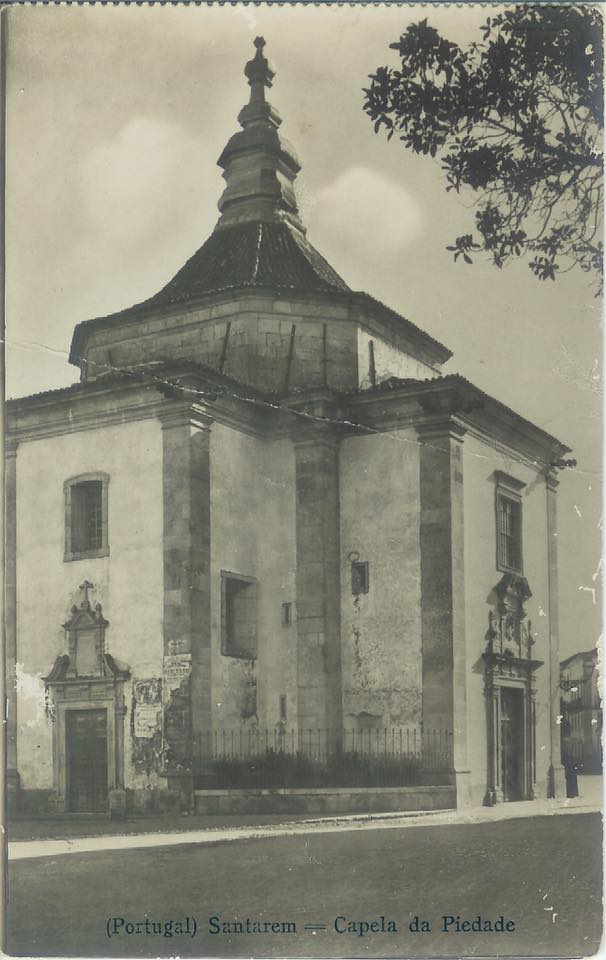
Igreja de Nossa Senhora da Piedade – Built between 1665 and 1691, it replaced the small church of Nossa Senhora de Guadalupe (see above), erected in the reign of king Afonso V (1432-1481). It is said to commemorate a miracle that allegedly occurred in 1663, after the Battle of Ameixial, which ended the Portuguese war of independence from Spain.
This church was built on the place of the old doors of Figueiras and Leiria, and either the door of Leiria or the Postigo das Figueiras is embeded in its walls.
It is difficult to reconstruct the geometry of the old door of Leiria and the nearby Torre dos Mestéres, as the wall was demolished and there are no known representations of this area before the construction of the church.
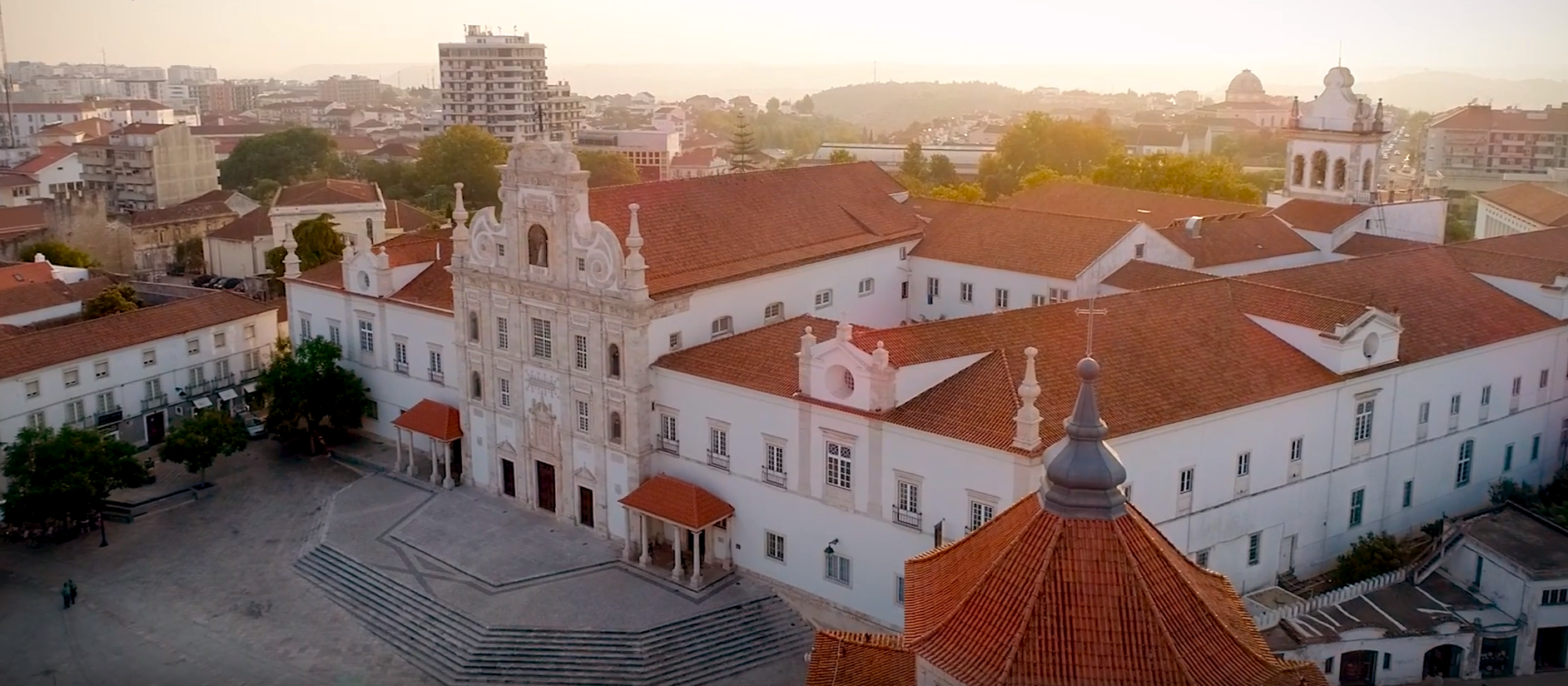
View of the Sé from an online video named Portugal in 150 seconds.Igreja de Nossa Senhora da Conceição, Seminãrio, or Sé – Built in 1672-1711, this church was built in the area of the second royal palace. Today it is the Episcopal Palace.
Ermida de Nossa Senhora da Victória –
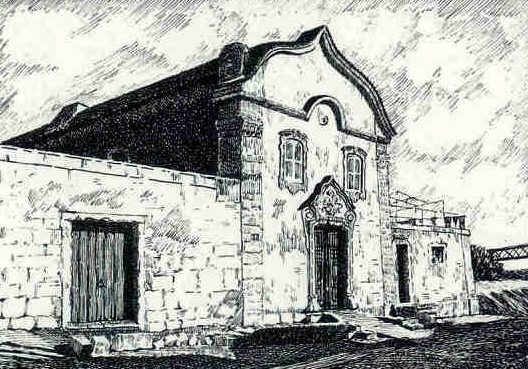
Ermida de Nossa Senhora das Neves – This chapel was located in the Santa Iria da Ribeira de Santarém parish.
Ermida de Nossa Senhora da Glória – This chapel was located in the Santa Iria da Ribeira de Santarém parish.
Ermida da Nossa Senhora Madre de Deus, or Ermida de Valada – Mentioned by Vasconcelos (1740) as a chapel located near the Porta de Valada.
Igreja de Santa Maria de Palhais – Part of the hospital of Santa Maria de Palhais, this ermida was demolished.
Igreja de Santiago – This parish church was probably built during the 12th century. The Santiago Parish was integrated in the parish of Sta. Iria in 1854.
Igreja de Santo Antão – This church was located near the Convento de São Domingo das Donas and the palace of the Archbishop, near Porta de Mansos.
Capela do Milagre –
Igreja de São Lourenço – The parish of S. Lourenço was located near Porta de Valada. Vasconcelos (1740) mentions a parish church of S. Lourenço.
Igreja de São Martinho –
Igreja de São Mateus – This church was built in.. It was retired from the cult in 1910 and in the 1980s it was an iron warehouse.
Igreja de São Miguel – This church was located in the alcáçova
Igreja do Espírito Santo – This church was located on the northwest part of the city, outside the walls, next to Convento da Trindade.
Igreja de São Pedro – This church was located in the alcáçova, and was the parochial church of S. Pedro parish.
